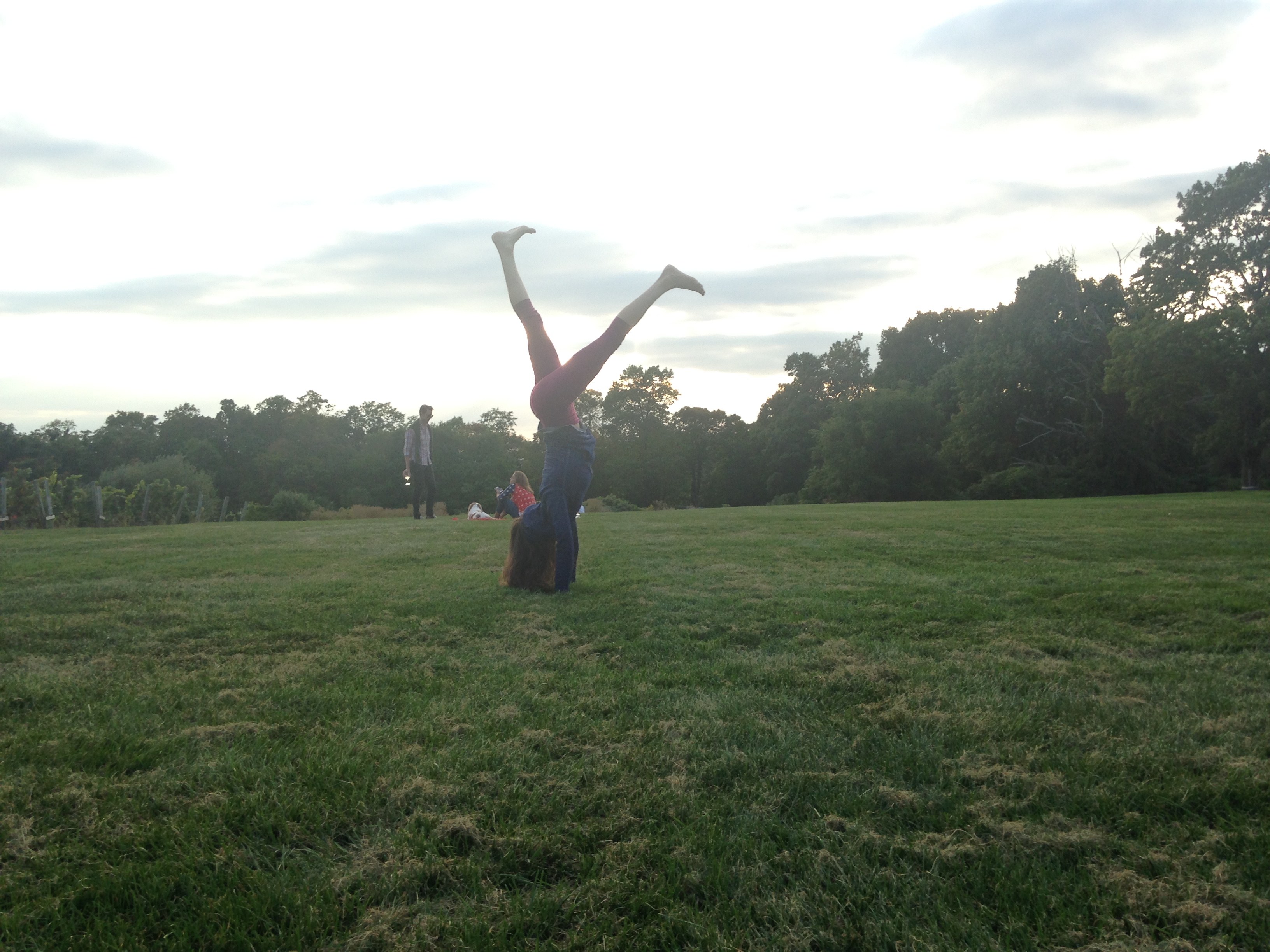The Language of Yoga
Today I’m thinking about how yoga teachers can present cues and comments in a positive and open-minded way. Are you supporting and encouraging your students? Are you being kind and compassionate, or is your tone bordering on bullying and nit-picking due to your own issues of perfection: We can only be open and accepting of others if we are that way with ourselves, right? As a person who is ridiculously hard on myself, a recovering perfectionist, (and I don’t mean that things I have created have resembled “perfection” but that I held myself back from creating anything at all due to illusions of perfection) believe me, I am the first to admit that this isn’t always an easy task.
That said, one of my greatest goals as a teacher and, I believe, strengths (due to my own life experiences and lessons) is enabling students to feel accepted no matter what state of being they stepped into class with that day, whether that is a fiery need to conquer their practice (they may have excess energy to burn) or the desire to lay in Savasana the entire time (they may feel depleted). I am here to say that it’s not always a perfect balance of “effort and ease” even though we may aspire to it. And although I love to remind my students of the beauty of this message (of effort and ease/strength and grace), I recognize that sometimes we need to play with extremes, and that that’s okay too. After all, yoga is about acceptance of this moment, not forcing something or someone to be different. As Eckhart Tolle reminds us: “Whatever we resist persists.”
Recently, in a yoga class I attended, the teacher , after a challenging posture, inquired, somewhat sharply: “Were you burning a hole in the floor with your gaze?” I paused, feeling, for a moment, ashamed. Was I? I may have been. My gaze had felt intense and focused, and there may have been, ahem, blue blazes emanating from my eye balls. I am vata-pitta (air and fire elements) constitution, according to the ancient science of Ayurveda, and was feeling my pitta (fire) that day. So perhaps I was guilty as charged. It’s true that pitta dominant people can benefit from softening their gaze, and I believe it’s a good and honest question in terms of softening around the places we tend to harden (I often encourage my students to feel for the places in their bodies that might benefit from softening). I also believe that how we teachers phrase our cues and questions can go a long way in terms of enabling students to find that place of balance we talk about.
In the same class, after another balancing posture, the teacher interrogated: “Do you feel you just nailed that pose?” The question was meant to point out the fact that nailing a pose might not be very “yogic.” I wanted to say, “Yes!” The truth is I was glad that I had since there are plenty of times that I don’t. I have spent most of my adult life trying to find solid ground, so when I occasionally “nail” a balancing pose it can feel like an accomplishment and that, I believe, is something to celebrate. Consider this: Nailing the pose is also part of the dance. It is not always “better” to do less. It is not a one-size fits all situation.
I like to acknowledge students’ hard work, whether they land the pose or fall out of it; either way is a beautiful effort in my book. If you are someone who always “nails” poses and doesn’t allow yourself room to wobble then you might consider what it would feel like to allow room for wobbling, to even throw yourself off balance purposefully by trying something different like closing your eyes. In either case, whether students lean toward the “effort” or “ease” side of the road, questions can be phrased in a way that encourages them and perhaps allows them to find new ways of doing things. Why not ask students to explore what a pose felt like? Were they feeling their fire? Were they shaky? It can be an effective way of diving into the body and feelings/emotions.
In general, an inquiry or reflection that stems from one’s own practice/experiences is, for me, a much more effective/helpful cue; for example: “When I attempt a balancing pose and fall I try to remember that the stumbling is also part of my practice/experience.” When we ask genuine exploratory questions, such as “What does it feel like if you lengthen your stance?”, while recognizing that it may not feel right for everyone, we are giving students space to feel the practice and make decisions based on that inner intuition. How about: “What does it feel like when you hold steady in a pose versus when you fall, and is it possible to be okay with both?” On some days it might be possible “to be okay with both” and on other days the answer might be “No.” I remember practicing next to a woman once who was consistently losing her balance and she was visibly and extremely irritated by this, swearing under her breath. We don’t know what she came to her practice with that day; maybe she was taking care of someone who was ill or going through a break-up; maybe she needed to swear under her breath in that moment; who is to say what is and isn’t “yogic?” By giving permission to be inside the extremes (e.g., feeling my fire), we can, ironically, more easily move into that place of balance. Because it is by accepting where we are, not criticizing or beating ourselves up for doing something “wrong,” that we bring in the space needed for change. When we focus and dwell on what we perceive as the wrong thing (i.e., I suck for eating that 2nd slice of cake and now I am fat and have ruined my diet), we tend to stay stuck in that very place we don’t want to be in. (By the way, I know nothing about that cake banter. Wink.)
I wholeheartedly believe that it is essential for teachers to keep in mind that we are not here to control our students. Each student is coming from (in general or on any given day) a different place and that is a very personal thing. For me, excessive nit-picking during my formative years had the effect of stunting my creativity, my spontaneity and flow (probably why I’m drawn to Vinyasa style of yoga), so when I am practicing yoga a ‘nit-picky’ type of banter is truly the last thing I need. When I make my way into a posture, an invitation to explore is what will enable me to blossom and more naturally find my center (of course I also recognize that when we cultivate inner strength and balance what someone else says or does will have less, if any, effect on us, but that is for another essay).
So although each teacher’s particular teaching style will inevitably stem from his or her own experiences, I think it’s valuable to consider that those experiences are not necessarily your students’ experiences. I have spent many years holding myself back due to fear and uncertainty, due to faulty early lessons that it is not proper or ‘lady like’ to go for the things you want in life, or that to be good at something is ‘showing off’ and, essentially, that it is not safe or appropriate to be powerful and strong. For many years, due to these ingrained lessons, I have been out of touch with my fire, my power center/strength and, subsequently, my ability to manifest the things I want and need in my life in order to feel supported and free. My teacher, on the other hand, admitted to coming from a place of being a “Type A” personality, on over-achiever, someone who consistently “over-did.” I come from a place of floundering; I fall enough, on and off the mat, to learn and grow. For someone who is used to always getting it right, it might be freeing to wobble a bit, to learn from missteps. The thing is you can’t know. That’s the point. And that’s why I favor open-minded language.
Most importantly, a teacher, I believe, is there to hold the space for students, not to correct or control them. Consider this: when people receive input in an open, non-judgmental way they are more likely to listen and perhaps make changes they would benefit from. In The Wisdom of No Escape, Pema Chodron relays that “when you find yourself slumping that’s the motivation to sit up, not out of self-denigration but actually out of pride in everything that occurs to you, pride in the goodness or the fairness or the worstness of yourself–however you find yourself–some sort of sense of taking pride and using it to spur you on” (p. 11).



